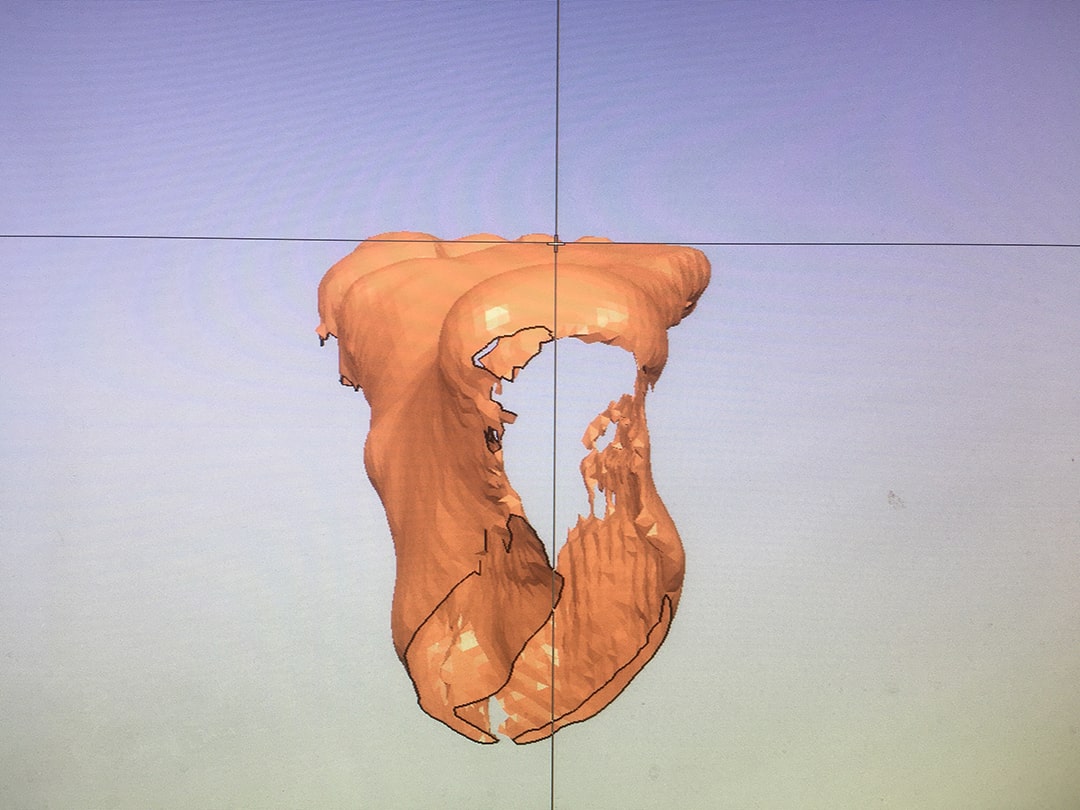
GlassScan's base plate is positioned under the weight bearing gastrocnemius so the foot has an approximate 90 degree relationship to the lower leg.
Allow the heel of the foot to hang over the edge of the examination table so it can be scanned without obstruction.
Maneuver GlassScan into position so the trapezoidal edge is intersecting the third interspace at an angle, supporting the fourth and fifth metatarsals.
GlassScan's trapezoidal cut will accommodate left and right feet simply by switching to the other side of the trapezoid for the other foot.

GlassScan provides the base of support so the clinician can maintain proper alignment of the joints while scanning.
Position the STJ in a neutral position then shift and apply force with GlassScan's loading plate pressed against the fourth and fifth metatarsals. Fully pronate the MTJ by allowing GlassScan's loading plate to supply the force. Take care not to over pronate the MTJ so it affects the neutrality of the STJ.
The foot is ready to scan with the iPad Structure sensor.

The scanner is incapable of scanning transparent objects so the GlassScan jig will not appear in the finished image.


GlassScan also allows two clinicians to perform highly accurate, unobstructed scans while the STJ is held in a neutral position, the MTJ is fully pronated and the first metatarsal is fully reduced. Maintaining an accurate scanning position can be challenging from the side. GlassScan allows the iPad structure sensor a clear vantage point while scanning.
If there is only one clinician present, the hallux maybe taped into position so it is maximally dorsiflexed in order to fully reduce the first metatarsal.
GlassScan is exclusively available to practices that use the Capture Wand Scanner and Performance Laboratories.
Call Performance to start putting GlassScan to work in your practice.

